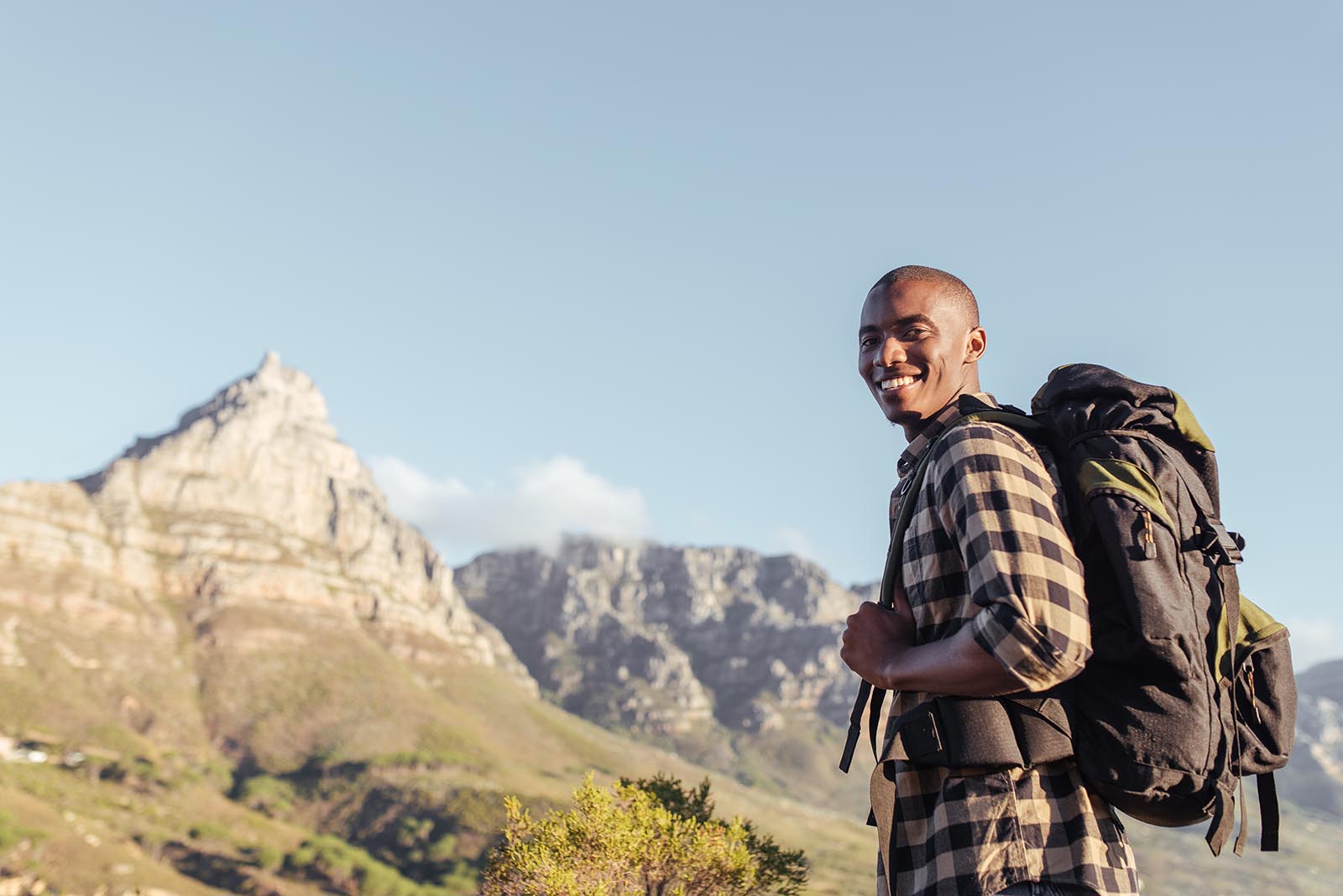Hiking vs Trekking
May 5, 2021

Hiking vs. trekking. Is there a difference between the two? More importantly, does it even matter? The answers are yes and yes.
Although the terms hiking and trekking are often used interchangeably, they’re not quite the same thing. And while it may seem silly to be nitpicky over these terms, the distinction is important because it can help you determine the specific type of gear you need to bring along with you.
So, what is the difference between hiking vs. trekking? Allow us to explain.
Hiking vs. Trekking: Definitions
To understand the differences and similarities between hiking and trekking, let’s look at how each is defined. Here are the definitions, according to the Oxford English Dictionary:
- Hiking: “the activity of going for long walks, especially across the countryside.”
- Trekking: “to go on a long arduous journey, typically on foot.”
As you can see, there’s really not much of a difference between the two terms. Both describe the act of walking in nature for pure enjoyment.
However, there is a slight emphasis on trekking being the more difficult of the two. In modern times, trekking is used to describe multi-day routes that tend to be more challenging, whereas hiking can be used to describe single- or multi-day routes.
That’s not to say that hiking is by any means easy! A difficult hiking trail can leave you gasping for breath and incredibly sore the next day. But let’s just say there’s a reason why hiking with kids is a far more popular activity than trekking with kids. One requires significantly less planning and time than the other.
Still fuzzy on the differences between hiking vs. trekking? Let’s take a deeper dive into each activity.

What Is Hiking?
Hiking can be a confusing term at times, but traditionally, it refers to taking a long walk in the woods or the countryside. One of the key differences between hiking and trekking is that hikes usually follow a marked trail. They also tend to start and end in the same place.
Hikes are often a single-day event that requires little planning. Basically, you can pack a cooler backpack with a few snacks and drinks and call it good. Other items you should consider packing for a day hike include:
- Extra socks
- Extra clothes
- Sunscreen
- First aid kit
- Map
- Rechargeable flashlight or LED headlamp
- Knife or multi-tool
- Emergency shelter
- Toiletries
Multi-day hikes involve slightly more planning, but in general, hikes are considered a relatively easy adventure that doesn’t require much equipment.
To recap, here are a few key characteristics of hiking:
- Follows a marked trail
- Follows a marked trail
- Can be single- or multi-day trips
- Little to no climbing involved
- Start and end in the same place
- Easier to do as a family
What Is Trekking?

Trekking adventures are typically longer than hiking adventures. If you’re going on a multi-day expedition on varied terrain, it’s usually considered to be a trek. Long treks that involve traversing one long trail are called thru-hikes. Examples of thru-hikes include the Pacific Coast Trail and the Appalachian Trail.
Despite the definition of trekking being “arduous,” treks don’t need to be difficult! While many treks involve climbing up steep mountainsides, you can also take a leisurely trek across flat terrain.
However, since most treks are multi-day events by definition, proper planning is essential. If you’re planning a trek, be sure to bring the following:
- Food and water
- First aid kit
- Sunscreen
- Navigation
- Hiking backpack
- Sleeping bag
- Pack cover
- Weather-appropriate clothing
- Tent
- Quality flashlight or headlamp
- Multi-tool
- Stove and cooking essentials
- Toiletries
- Trekking poles
Even though you’ll pack more for a trek, be careful not to pack too much. Remember, you’re going to be carrying all of this stuff on your back!
To recap, here are a few key characteristics of trekking:
- Multi-day trips
- Increased mileage
- Combination of walking, climbing and mountaineering
- Start and end at different points
The Bottom Line
Both trekking and hiking are wonderful activities that allow you to immerse yourself in nature. The main difference between hiking vs. trekking comes down to two things: difficulty level and the amount of time it takes for you to plan your adventure. If you’re new to hiking and trekking, we strongly recommend starting with day hikes and working your way up to multi-day treks. You’ll be hooked before you know it!

SIGN UP FOR EXCLUSIVE OFFERS
Sign up for our newsletter and get exclusive access to new product launches, special offers and much more.
RELATED BLOGS














